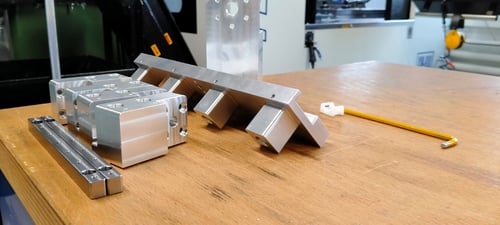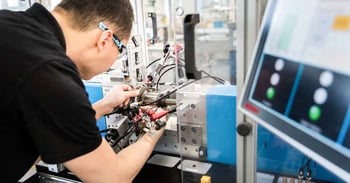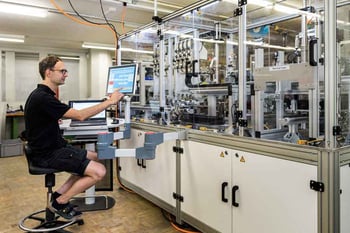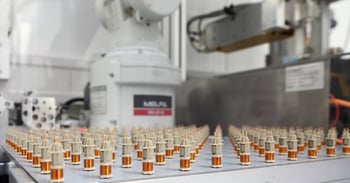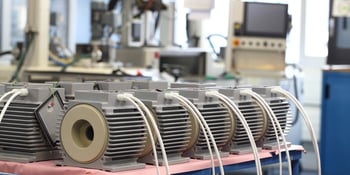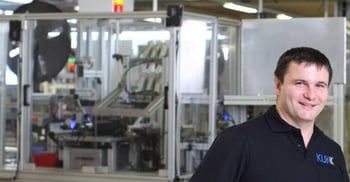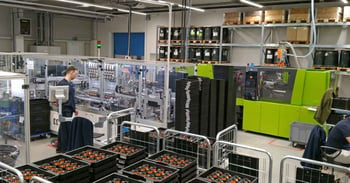No series production without tools
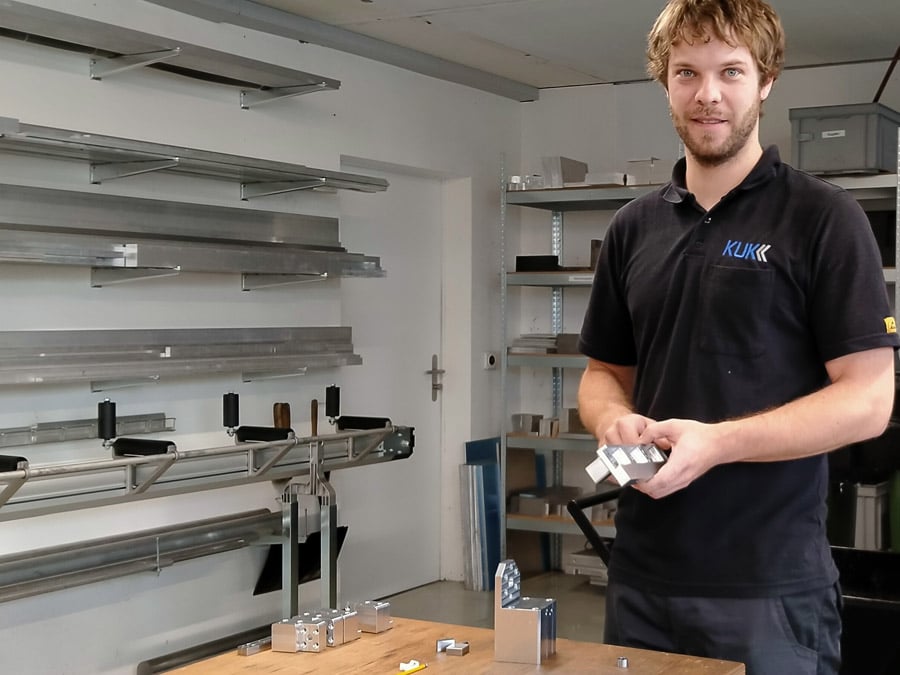
The master of the workshop is polymechanic Pascal Schweitzer, who pursues his task with passion and precision. "After several years in machine maintenance, I have a thorough understanding of the key points of tools. I know exactly which parts are important for quality and efficiency in manufacturing," he tells us at the KUK Group headquarters in Switzerland.
Short paths and production times
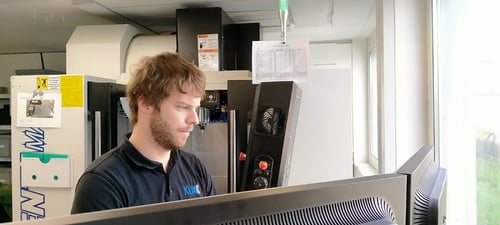
A trained eye wanders over the CAD drawing on the screen: Schweitzer quickly recognises problematic points. A query to the speedy KUK automation team immediately brings clarity. However, based on his practical experience, he often decides himself how to mill a part if a detail of the drawing could only be produced inefficiently due to the material, for example.
A versatile task
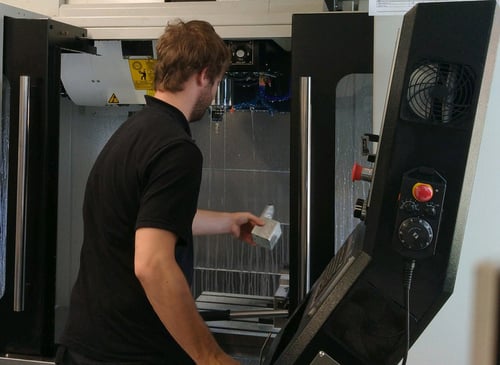 Pascal, a polymechanic, is at least as enthusiastic as he is in the workshop, playing handball and playing the trumpet in the carnival band. In toolmaking for KUK Group, he is fascinated by the wide range of tasks: he is not only at the milling machine, but also carefully takes care of material procurement or maintenance of the drill heads. Depending on the complexity, up to ten tools or tool parts are created every day for a tailor-made automation solution for customer-specific coil manufacturing.
Pascal, a polymechanic, is at least as enthusiastic as he is in the workshop, playing handball and playing the trumpet in the carnival band. In toolmaking for KUK Group, he is fascinated by the wide range of tasks: he is not only at the milling machine, but also carefully takes care of material procurement or maintenance of the drill heads. Depending on the complexity, up to ten tools or tool parts are created every day for a tailor-made automation solution for customer-specific coil manufacturing.
Time saving coil manufacturing
For CTO Stefan Dörig, in-house toolmaking is an important factor for KUK Group's success as a leading customer-specific coil manufacturer: "One of the great strengths of integrated toolmaking is its flexibility and efficiency, which not only bring the customer lower investment costs, but also a considerable gain in time." Especially in times with enormously high dynamics in the electronics industry, this advantage is worth its weight in gold: "Products or requirements change in ever shorter cycles, which usually requires a new tool again as soon as the inner diameter of a coil or the coil bobbin in general are adjusted." In addition, this also reduces the dependence on further suppliers and thus the complexity for the customer.
